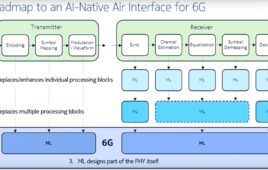The Chinese government is funding the development of a highly sensitive radar application capable of detecting the wing-flapping of a mosquito up to 1.2 miles away, according to a top researcher involved in the project. The device is reportedly in its prototype stage, and is being tested in a defense laboratory at the Beijing Institute of Technology (BIT). The unnamed researcher said that identifying and tracking individual mosquito-sized targets is no longer in the realm of science fiction, and claims his team is genuinely close to start saving lives with this technology.
Mosquitoes are one of (if not) the deadliest animals in the world, having claimed more human lives than all wars combined, and claim over one million lives a year, according to the World Health Organization (WHO). Controlling these pests is a challenge in itself, since they can seemingly appear and disappear without warning. After decades of developmental research, modern military radar can detect echoes of small objects (like mosquitoes) at far distances. The U.S. Missile Defense Agency’s sea-based X-band radar for example, can pick up a baseball-sized object from about 2500 miles away.
China developed a radar system with similar advanced features for tracking missiles and stealth aircraft. However, since some researchers working on these projects believe the technology could be used to combat pests like mosquitoes, they were able to convince the government into providing project funding. The research team received nearly $13 million in funding from China’s central government in late-2017, to develop a full-sized radar for detecting mosquitoes that’s capable of being tested in the field. The radar emits rapid electromagnetic wave pulses that travel at any frequencies. When these radio waves hit a mosquito, they bounce back with information containing the bug’s species, gender, flying speed and direction, along with whether the insect has recently eaten. This radar system could be mounted on a rooftop overlooking a residential community, and used to pinpoint the location of major mosquito colonies. If a colony migrates to another neighborhood, households in the area could be warned in advance.
Researchers in other countries used civilian radar networks to track movements of bird flocks or larger insect swarms like locusts and moths, however China’s research is believed to be the first attempt at utilizing radar to track mosquito activity. According to project researchers (who wished to remain anonymous for privacy reasons), the radar system prototype achieved unprecedented sensitivity because authorities allowed the team to develop its system using the latest technologies in military radar. The system features an advanced phased array antenna similar to ones used on China’s most modern warships. The antenna can simultaneously beam microwaves in multiple directions, while detecting missiles or military jets a lot faster than conventional radar using a rotating dish. The system also has a separate antenna for generating radio waves that move back and forth in numerous directions.
Known as polarization, the process provides detailed information regarding a target so that researchers can differentiate between a hungry female (sucks blood) and male (eats pollen). The first computer simultaneously utilizes an algorithm to identify and track the movement of several mosquitoes in a particular community. The project is collaborating between insect behaviorists and researchers from many disciplines and by proving vast data amounts, the radar is reportedly capable of helping biologists learn more about individual and collective mosquito behavior. This in turn could lead to new strategies for combating the spread of mosquito-borne illnesses.



